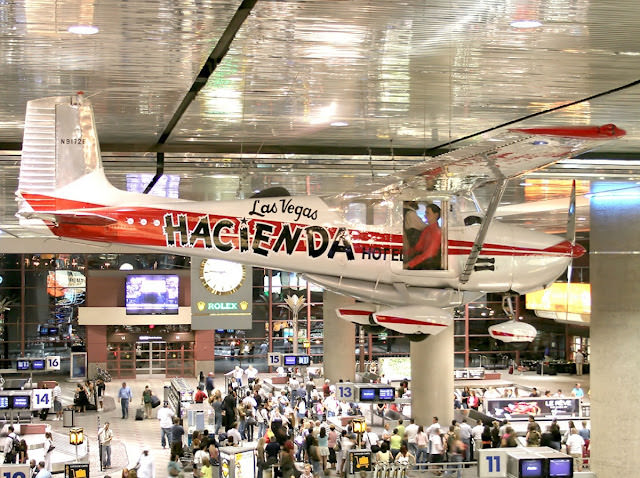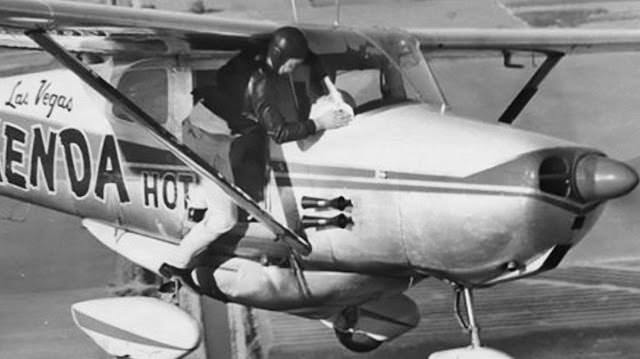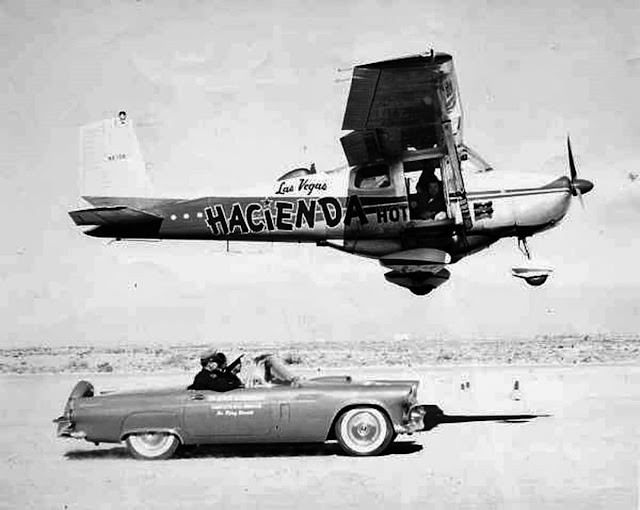In the late 1950s, an extraordinary aviation achievement unfolded as two men embarked on a record-breaking flight that pushed the boundaries of human endurance and aeronautical engineering. This flight involved a Cessna 172, a small propeller-driven airplane, which stayed airborne for an astonishing 64 days, 22 hours, and 19 minutes without once landing. This narrative delves into the preparation, challenges, and innovative solutions that characterized this historic flight.
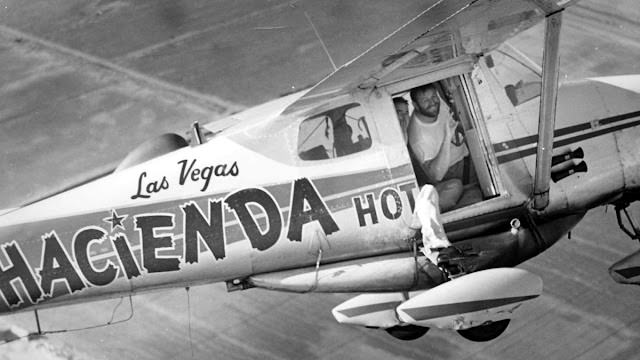
Background and Motivation
In 1956, Robert Timm, a World War II bomber pilot and a slot machine mechanic, proposed an ambitious project to promote the Hacienda Hotel in Las Vegas. Timm convinced the hotel owner to sponsor an attempt to break the manned flight endurance record. The goal was not only to achieve a remarkable aviation feat but also to garner widespread attention for the hotel, with its name prominently displayed on the aircraft.
Technical Preparations
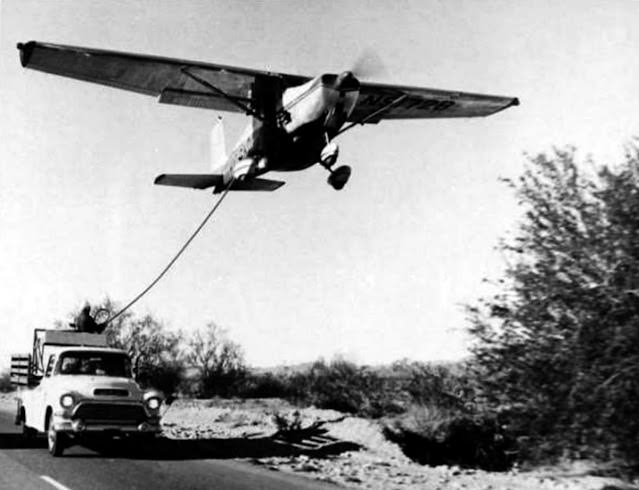
The aircraft chosen for this endeavor was a Cessna 172, registered N9217B. Recognizing the need for significant modifications to achieve the goal, Timm and his team spent a year retrofitting the aircraft. A crucial addition was a 95-gallon belly tank to supplement the 47 gallons carried in the wings, complete with an electric pump for fuel transfer. Moreover, the oil system was reconfigured to allow oil and filter changes mid-flight without needing to shut down the engine, a critical modification for prolonged airborne endurance.
Before embarking on their historic flight, Timm and Cook had to meticulously plan every aspect of their journey. This planning included mapping out the flight path, determining the refueling schedule, and preparing for any potential emergencies. The challenges they faced were not just technical but also physical and psychological, as staying aloft for over two months required immense endurance and mental fortitude.
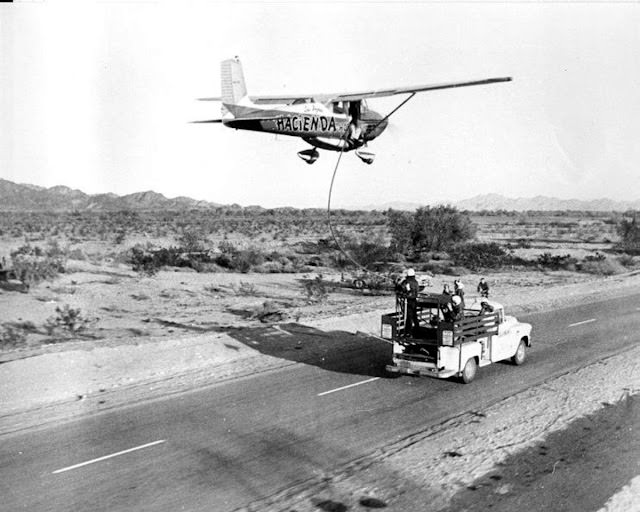
The modifications made to the Cessna 172 were groundbreaking at the time. In addition to the fuel and oil system modifications, the aircraft was equipped with a special harness system that allowed Timm and Cook to rest and sleep without losing control of the plane. The cockpit was also modified to include basic amenities and an improvised waste disposal system, ensuring that the pilots could maintain a semblance of normal life functions during their long journey.
Early Attempts and Final Preparations
Before achieving success, Timm and his team faced several setbacks, with three failed attempts to break the record. These initial failures led to further refinements in both the aircraft and the strategy. Eventually, Timm found a willing and capable co-pilot in John Wayne Cook, who also served as a mechanic. Together, they embarked on their record-setting flight on December 4, 1958, after implementing a unique method to verify the flight’s integrity: painting white stripes on the aircraft’s tires to ensure no secret landings were made.
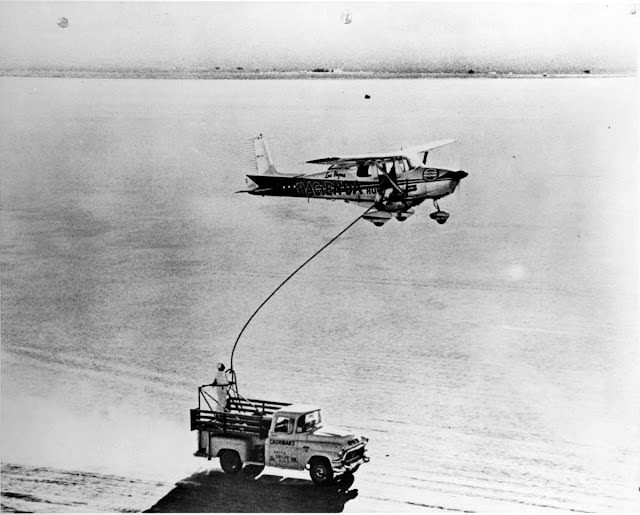
The Flight and Refueling Innovation
Much of the flight was conducted over the desert Southwest, utilizing the airspace around Las Vegas and occasionally diverting to Los Angeles for promotional activities. A key innovation that made this prolonged flight possible was the method of aerial refueling. Twice daily, a truck equipped with a fuel tank and pump would rendezvous with the Cessna over a designated stretch of highway. The aircraft would then lower a hook using an electric winch to snag a refueling hose, which was inserted into the belly tank for refueling—a process that took about three minutes and was repeated 128 times throughout the flight.
Daily Life in the Sky
Living in the confined space of a Cessna 172 for more than two months was challenging. Timm and Cook had to devise ways to maintain their health and sanity during the flight. They followed a strict routine that included exercise, rest periods, and regular communication with their support team on the ground. Their diet consisted of specially prepared meals that were easy to consume in a low-gravity environment, ensuring they remained nourished and hydrated.
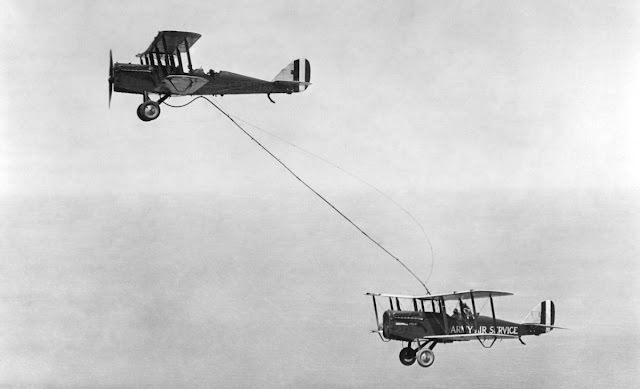
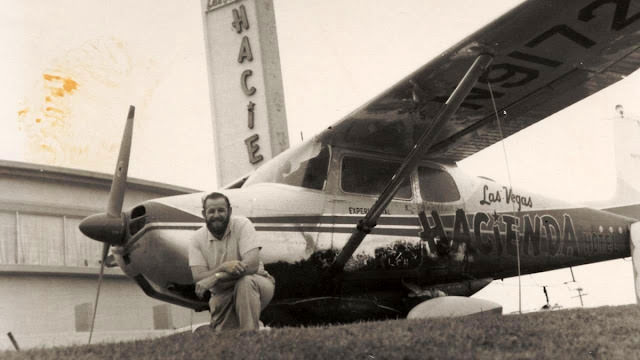
The ground support team played a crucial role in the success of the flight. This team was responsible for coordinating the twice-daily refueling operations, monitoring the aircraft’s systems, and providing meteorological information to help Timm and Cook navigate around bad weather. The support team also acted as a lifeline for the pilots, offering emotional support and ensuring that they remained focused and motivated throughout their ordeal.
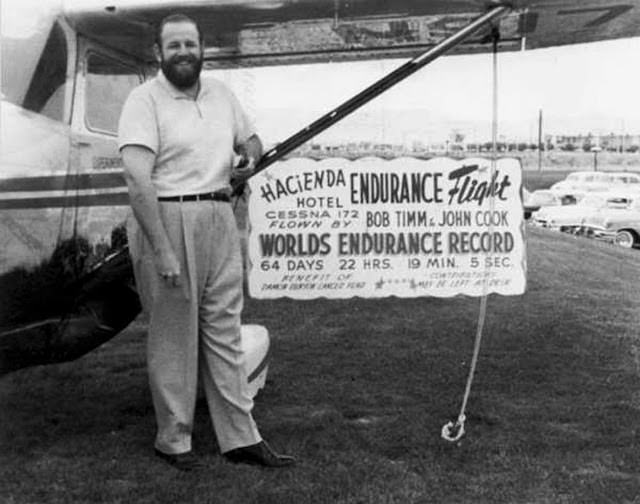
Thirty-nine days in, the aircraft’s generator failed, leaving Timm and Cook without lights, heat, or an electric fuel pump. They resorted to using a hand pump for fuel transfer and had to conduct refueling operations in complete darkness. Despite these difficulties, the duo persevered, surpassing the existing record and continuing their flight to push the limits of what was thought possible.
As the flight neared its end, the aircraft began to show signs of wear. Carbon buildup in the spark plugs and combustion chambers made it increasingly difficult to climb after refueling. Finally, on February 7, 1959, Timm and Cook decided to land. Before touching down, the integrity of their continuous flight was verified one last time by checking the paint on the tires, which showed no signs of landing, confirming their monumental achievement. The techniques developed for extended flight endurance have been applied in various aspects of aviation, from round-the-world flights to space travel.
